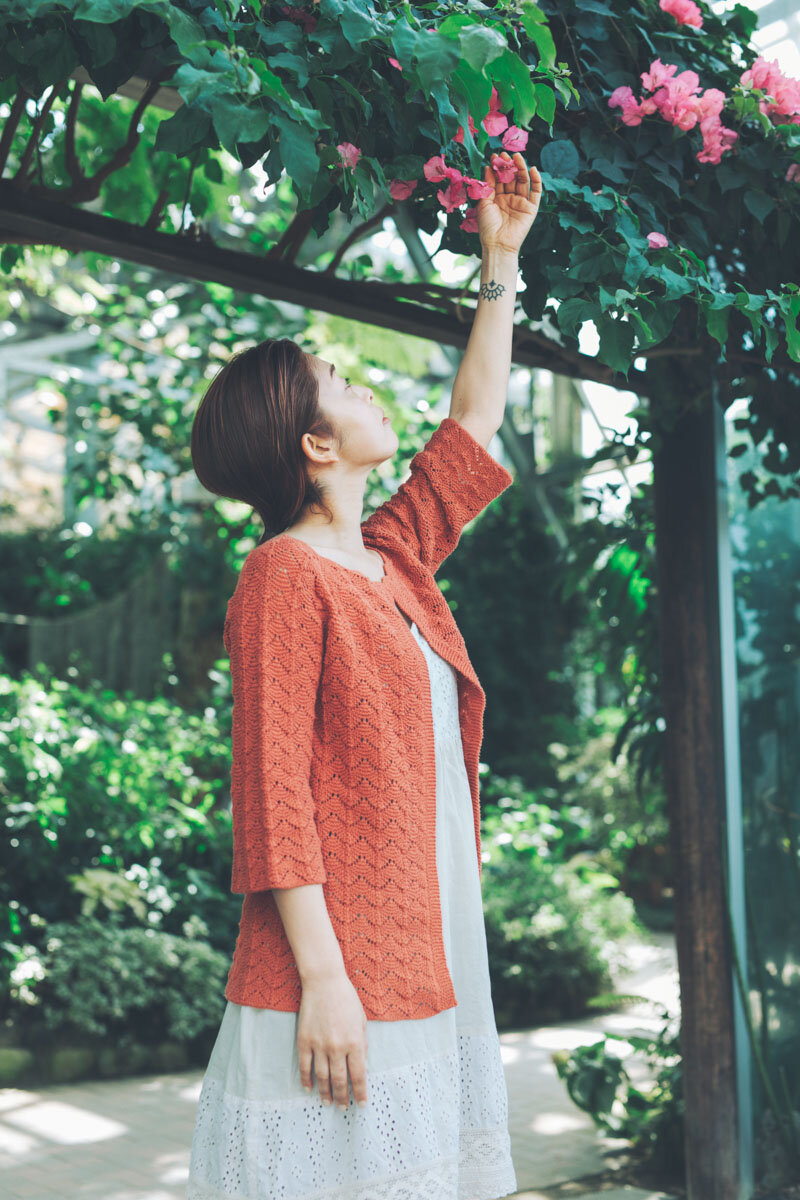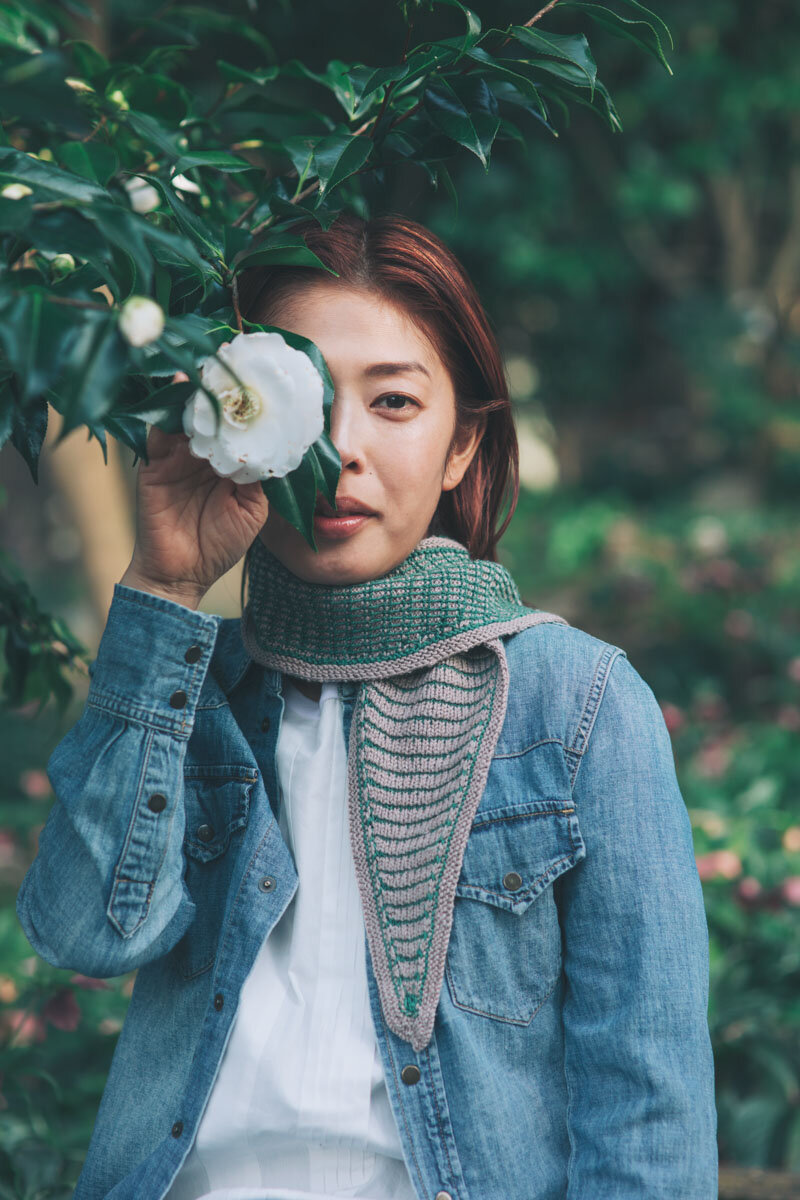AMIRISU | Strata Issue 22, Spring/Summer 2021
I’m excited share that we’ve just added Amirisu Magazine to our growing collection of BOOKS + PERIODICALS.
New to Amirisu? It’s a bi-annual knitting lifestyle magazine from Japan. What more could you ask for.
Our inaugural issue Strata - Issue 22 Spring/Summer 2021 takes inspiration from layers and features twelve knitwear designs created by some of Amirisu’s most favourite designers from Japan and abroad.
With feature article - Colours of OkinawaIn. A craft guide to Okinawa, encounter two fascinating textile traditions and get inspiration for a future trip with our recommendations for museums, textile workshops, and pottery galleries on the island.
Plus a project from Lori Ann Graham, virtual events and content to enjoy from anywhere, a needle felt project, and more.
We have now sold out of Issue 22.
Digital copies are available HERE.
Or, shop Amirisu’s current titles HERE.
Let’s Take a Closer Look….
Humboldt
By amirisu
Pattern notes: A bottom-up sweater worked in the round with lace detail yoke.
What we love: Delicate lace pattern reminiscent of the veins on an ageing leaf.
Yarn suggestions: Linen or linen blend fingering weight yarn.
Ravelry: Humboldt pattern page
Ranunculus
By Trine Bertelsen
Pattern notes: Top-down construction with a simple lace motive.
What we love: Sleeve and body length can be tailored to suit.
Yarn suggestions: Pima cotton or cotton blend fingering weight yarn.
Ravelry: Ranunculus pattern page
Thistle
By Sari Nordlund
Pattern notes: Cuff-to-toe construction with reinforced heel flap.
What we love: A new heel technique to try - Round French heels!
Yarn suggestions: 100% wool or sock blend fingering weight yarn.
Ravelry: Thistle pattern page
Fay (above)
By Fiona Alice
Pattern notes: Bottom-up construction using a mix of flat knitting and knitting in the round.
What we love: Advanced construction techniques for when you’re up for a challenging knit.
Yarn suggestions: Cotton or cotton/wool blend fingering weight yarn.
Ravelry: Fay pattern page
Sand Waves (above)
By Ririko
Pattern notes: Top-down seamless construction.
What we love: It just has to be the the gentle waves around the yoke.
Yarn suggestions: 100% wool or sock blend fingering weight yarn.
Ravelry: Sand Waves pattern page
Nigella (above)
By Kate Gagnon Osborn
Pattern notes: Slight asymmetrical design worked from the neck out.
What we love: A mix of interesting textures sure to make for an engaging knit.
Yarn suggestions: 100% wool or wool blend sport weight yarn.
Ravelry: Nigella pattern page
Agave (above)
By Orlane Sucche
Pattern notes: Worked top-down and in-the-round with very on trend sleeve shaping.
What we love: The stripes with repeating eyelet detail.
Yarn suggestions: 100% wool or wool blend fingering weight yarn.
Ravelry: Agave pattern page
Blomsterkrans (above)
By Dianna Walla
Pattern notes: Hat and cowl set using stranded colourwork.
What we love: The flower motives!
Yarn suggestions: 100% wool or wool blend light-fingering weight yarn.
Ravelry: Agave pattern page
Calathea
By amirisu
Pattern notes: Neckerchief worked flat utilising increases and decreases to shape the piece.
What we love: A mismatch of yarn weights and fibres to create interesting colour and texture.
Yarn suggestions: Linen blend lace weight yarn and a wool blend fingering weight yarn.
Ravelry: Calathea pattern page
Lelia (above)
By Nataliya Sinelshchikova
Pattern notes: A drop-shoulder pullover knit flat from the bottom up.
What we love: An array of techniques to keep you busy.
Yarn suggestions: Textured wool yarn in a DK weight.
Ravelry: Lelia pattern page
Plumeria (above)
By eri shimizu
Pattern notes: A pullover worked top down. German short rows are used to shape the neckline.
What we love: The layers of luxurious alpaca/cashmere.
Yarn suggestions: Alpaca/cashmere blend lace weight yarn and a wool blend fingering weight yarn.
Ravelry: Plumeria pattern page
Liila (above)
By Sari Nordlund
Pattern notes: A vest worked bottom-up, in-the-round. The ruffle is worked separately and seamed to the finished fabric.
What we love: The fine fabric created using the Merino/alpaca bland.
Yarn suggestions: Merino/alpaca blend lace weight yarn and a mohair/silk for lace weight yarn.
Ravelry: Liila pattern page
















































































































